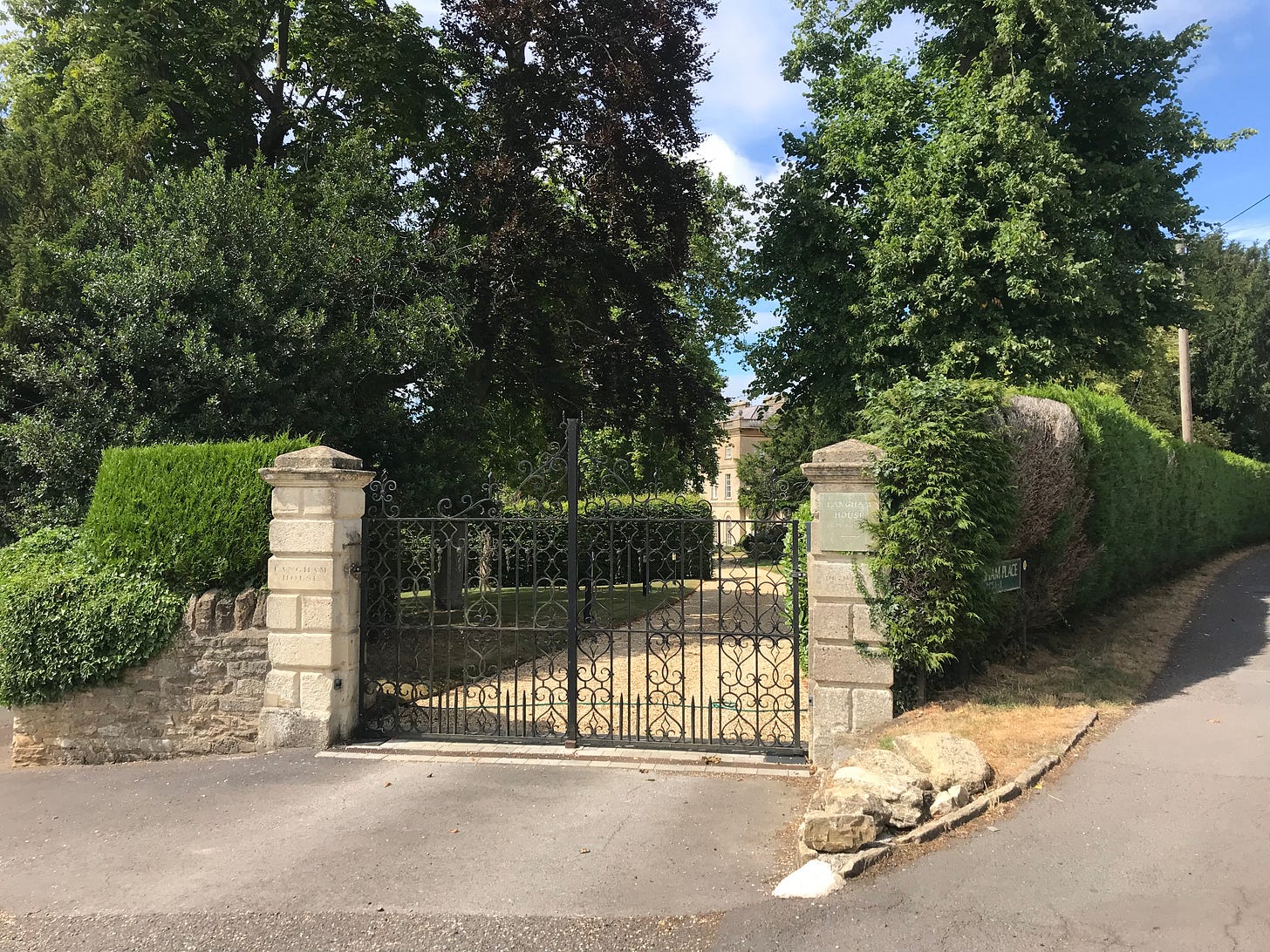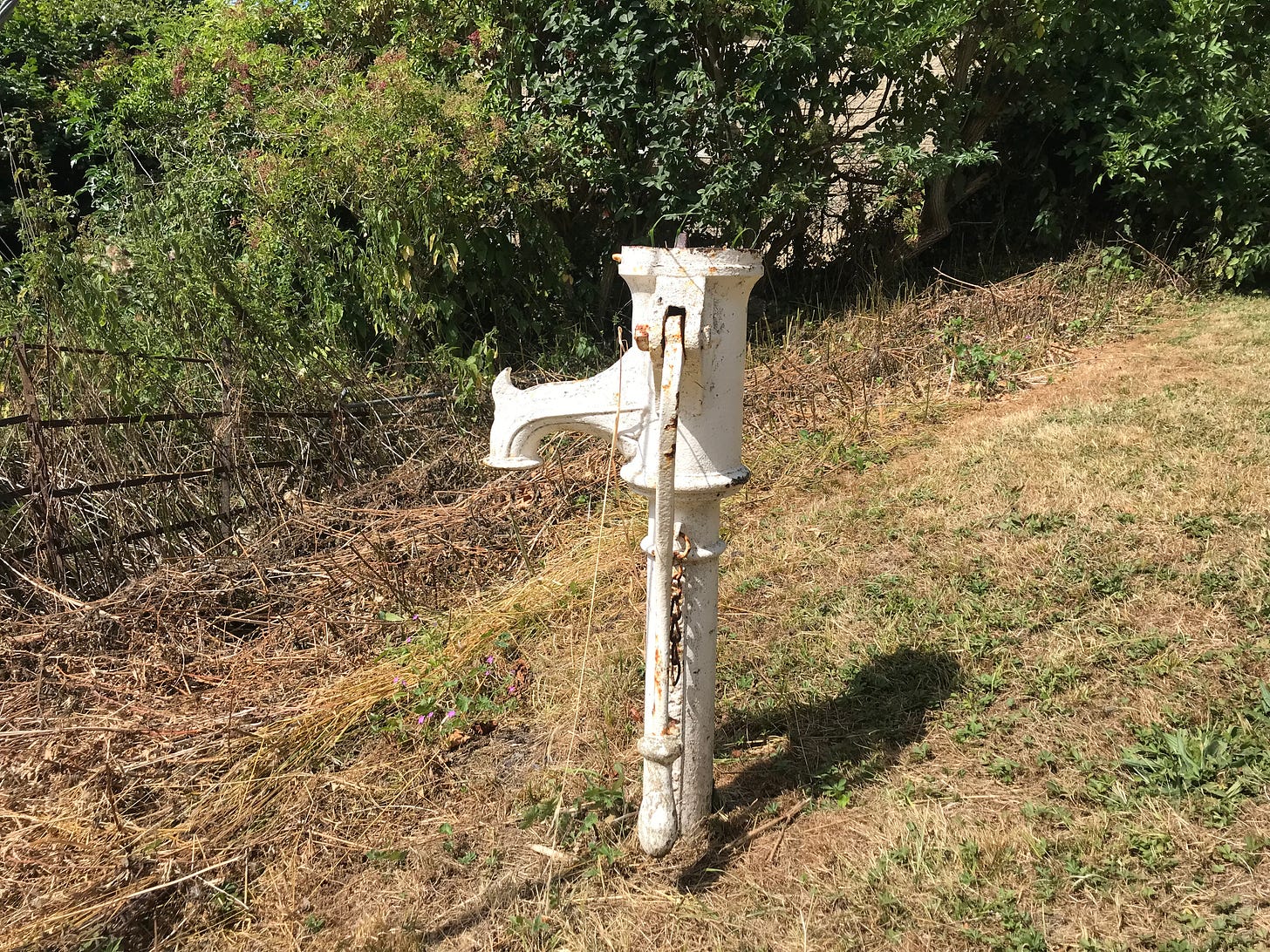Rode in Somerset
a village full of history and a dark tale
Lying just inside the northeast Somerset border is a tranquil village. This is a place found in the Domesday Book of 1086. I am here today taking a walk around the village of Rode. The town of Frome is four miles to the south and the Wiltshire village of Southwick a couple of miles east.
I am walking around on the last day of July, and although there is a strong breeze, it is pretty hot. A pleasant enough day to spend a few hours taking photos, some of which are on this page.
Rode has had a few changes to the spelling over the years. In 1201 it appeared as Roda, followed in 1230 as la Rode. By the eighteenth century, it had changed to Road. In 1919 Somerset Council decided that it should revert to Rode. The name comes from an Anglo-Saxon word meaning clearing.
Rode had three manors and several mills by the time of the Norman conquest in 1066. By 1250 it had been granted a charter to hold a weekly market and an annual fair. The Church of St Lawrence dates back to the late 14th and early 15th centuries. Some fragments of a Norman doorway indicate an earlier church on the site. The tower has contained bells since the 16th century. The church sits alongside the A361 and today is on the very edge of the village. In the village’s early days, it would have been the centre of the main population. Today, Rode is in three sections, The area around St Lawrence Church, the main village and most populated part north of this area, and to the northeast, Rode Hill.
As the village grew, the population preferred to be closer to the River Frome. Another church, Christ Church, was built at Rode Hill in 1824 and designed by the architect Edmund Goodridge, known for his work on Beckford Tower, Bath. The church was made redundant in 1995, and today is a home and the Andrew Hooker Violin shop. Music concerts are occasionally held here too. It’s from here that I start my walk, having parked my car on Rode Hill close to this former church.
During the 16th and 17th centuries, Rode grew as woollen milling boomed, as it was also in the nearby town of Frome. Rode had four or possibly five woollen mills, which of course, created employment and wealth for the owners. Such wealth saw the building of some grand houses that remain today, such as Langham House on Rode Hill, which has its own story.
A Story of Murder in Rode
Langham House, formerly Road Hill House, was the scene of a murder in 1860. Constance Emily Kent, age 16, murdered her 3-year-old half-brother, Francis Saville Kent. Constance denied the murder, and the police in Frome believed her story. A very well-respected detective from London was appointed to investigate, Detective Inspector Jonathan “Jack” Whicher.
Someone took the boy from the bedroom of Elizabeth Gough, his nursemaid, on the night of June 29th. His body was found the next morning, located in an outside privy (toilet) in the garden of the house. The privy was for the use of the servants. The boy’s throat had been cut, and he had also sustained other injuries.
The local police superintendent was convinced that Gough was involved in the murder. Early on in the investigation, a bloodstained nightgown was found inside a chimney in the house. Superintendent Foley replaced the nightgown and arranged for two officers to keep watch, believing the murderer would retrieve the nightgown to destroy it. The operation failed as the two officers found themselves locked in the kitchen and, after being released, discovered that the nightgown had been taken.
Foley was worried that the incompetence of his men would reflect poorly on him and did not reveal the discovery of the bloodstained nightgown or the failed mission to catch the murderer. This was when Jack Whicher was sent from Scotland Yard at the request of local magistrates to the Home Office. Whicher was used to solving complex murder cases, and he was soon on the trail of the victim’s half-sister, Constance. She was missing a nightgown, and Whicher was looking for it. Superintendent Foley never revealed he had found it. There was some circumstantial evidence, and Constance was arrested. Constance’s father, Samuel Saville Kent, used a barrister to defend his daughter. She was given bail, and later the case was dropped due to a lack of evidence, the most crucial being her blood-soaked nightgown found by the Frome Constabulary.
Constance Kent Confesses
In April 1865, Constance Kent confessed to killing her half-brother, Francis. Constance was sentenced to death, but this was commuted to life in prison owing to her youth at the time and her confession. She served twenty years and was released in 1885, at the age of 41. In 1886 she emigrated to Australia, changed her name to Ruth Emilie Kaye and died in Strathfield, Sydney, on April 10th 1944, at the age of 100.
Many books and film plots have drawn on this case. The television film The Suspicions of Mr Whicher: The Murder at Road Hill House (April 25th 2011, ITV) is a dramatisation of the case.
Royal Blue
Before we go into the central part of the village, I take a walk down Rode Hill to the river Frome at the bottom of the hill. Here you will see a former coach house and a delightful cottage alongside the river. Crossing the old bridge we come to a former Mill, which until earlier this year was a restaurant, The Mill at Rode. Yet another victim of the Covid pandemic. (It is opening under new ownership)
This old mill features in our English language. During the 18th century, a consortium of mills won a competition to make a robe for Queen Charlotte, and a new colour dye was invented for the robe. The colour Royal Blue was granted a certificate by King William 4th (1830 to 1837) authorising its sale by that name.
Scutts Bridge Mill continued to operate until around 1904 and is believed to be the last water-driven factory manufacturing cloth.
Rode Village Pumps
Walking back up the hill, I turn right onto Lower Street. Notice the two village pumps, a rare sight, and thankfully they have been preserved for us to see today. There are some fine old cottages and a former chapel along this road. At the end of the road and blending into The High Street is the former Red Lion public house. It has been closed for many years, and the only pub currently open in Rode is the Cross Keys on High Street. The earliest documentary evidence shows that this was a pub as early as 1730.
Henry Fussell purchased the Cross Keys in 1857. It soon became a successful brewery under the Fussell family. Between 1879-1886, Sidney Fussell acquired the business from his ten brothers and sisters. The brewery was enlarged in 1903 and again in 1934-5.
The brewery came under the ownership of Bass in 1962, and beer production ceased but carried on bottling until 1968. It then became a distribution centre until closing in 1992. Today the site is a modern housing development aptly named, The Old Brewery. One old part of the brewery has been converted into apartments.
Here’s an interesting fact: Ida Maud Fussell, a housekeeper to Percy Fussell, a former brewery chief, married him after 21 years of service. She lived in Rode, and when she died, she left ten million pounds to her nephew, a “reclusive smallholder”, according to The Independent newspaper.
The High Street, Rode
The High Street, as well as containing the Cross Keys, has some beautiful houses, some of which, in days gone by, were also pubs. The last remaining shop is the village post office, and there is also Choc on Choc which sells hand-made chocolate online.
The School, Rode
There is a lovely old school with modern additions for today’s children. The old building had two entrances at the front, one for girls and the other for boys.
Packhorse Bridge, Rode
It’s worth turning into The Mead at the end of the High Street. There is a footpath that leads down to the River Frome. I do recommend this lovely country walk, and in fact, you can go to Wolverton, the other side of the river. To do so, you must cross the ancient and beautiful packhorse bridge.
Heading back from the bridge along The High Street, I take a trip down Church Lane, a mixture of older and a few newer properties. This leads us to where the original start of Rode was, and the A361 and St Lawrence church mentioned at the beginning of this article. Here too is the last pub to close, The Bell Inn, although it is in the market for new owners.
I can’t write about Rode and not mention something that was a big attraction some years ago, Rode Bird Gardens which was on the site of Rode Manor. The gardens sadly closed in 2001 and now are home to several ‘exclusive’ houses. The bird gardens, along with a lovely miniature railway, delighted many children and adults with a trip around the land and through the woods.
To watch my YouTube video tour of the village, click here
How to Support Roland’s Travels
There are two ways you can support me and this newsletter:
1 If you wish, you can show your support for what I do through Buy Me a Coffee. However, I’ll probably end up buying tea or petrol.
I understand that not everyone who would like to will be in a position to support in this way, and that’s fine! My content is available to everyone, regardless of their circumstances.
2. Most importantly, please subscribe and share Roland’s Travels with those you think will enjoy it.













The Red Lion was once a great bikers pub which I used to visit having ridden down from Oxford as a student on a BMW. I was sad to see it close, I believe for structural reasons.
I enjoyed this piece about Rode,